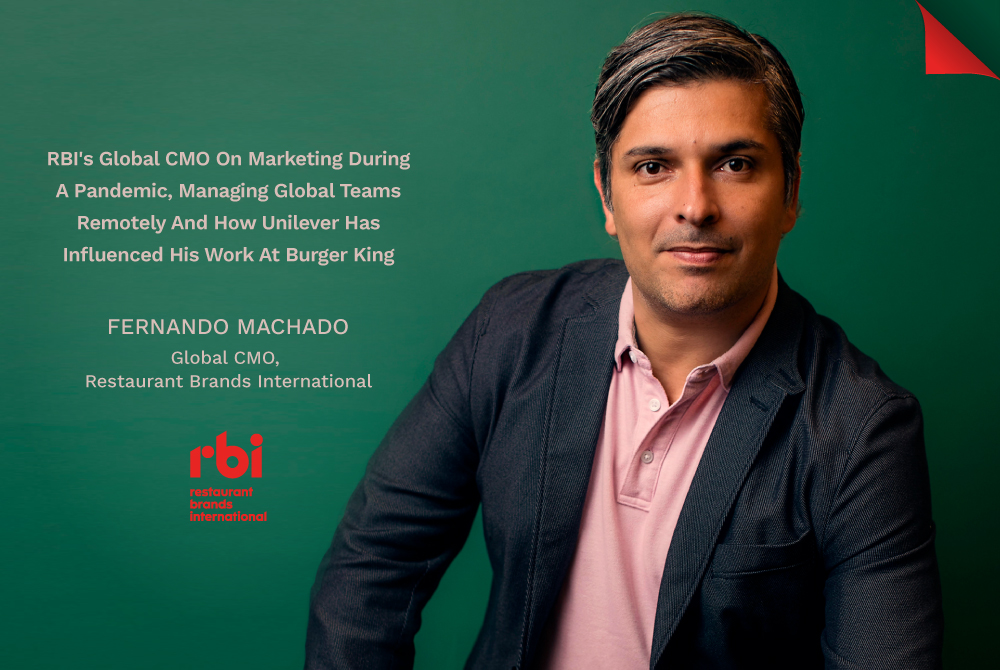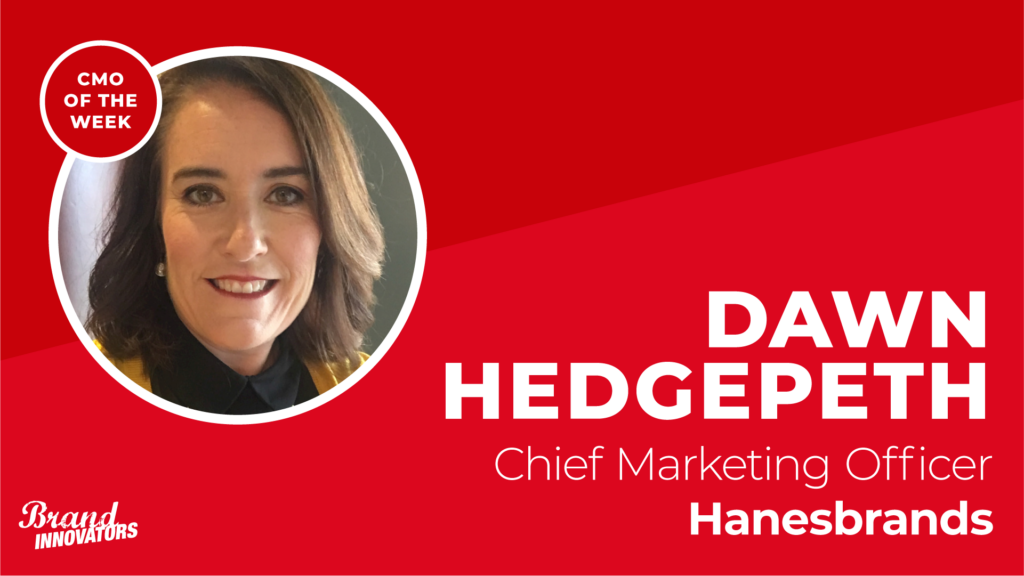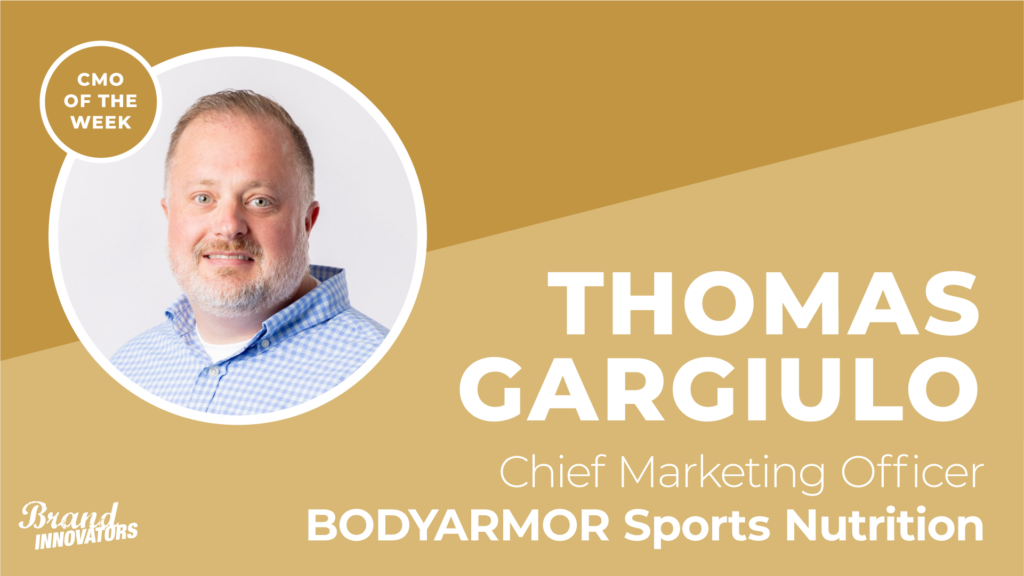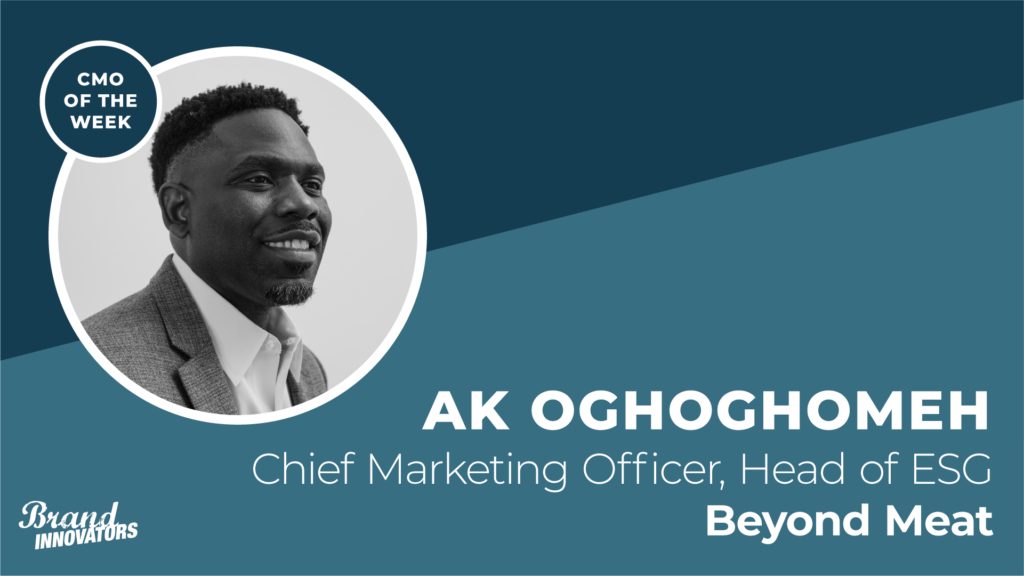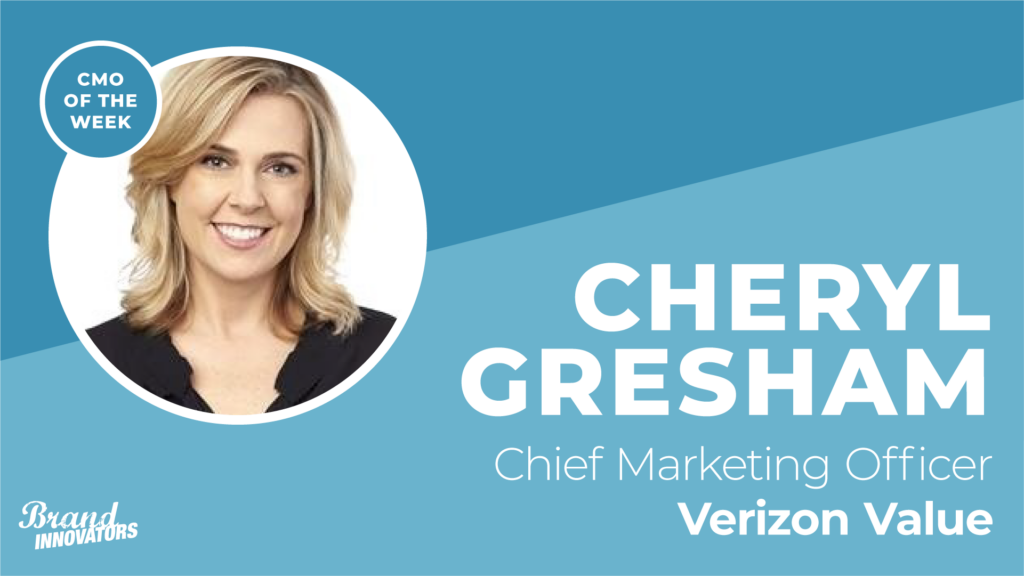When Burger King launched one of its highest-profile (and some would say off-putting) campaigns in recent years for Moldy Whopper in February, it seemed like a simpler time, when people would be more likely to laugh at the company’s light-hearted and fun tone.
What happened the next month, of course, was that multiple countries locked down and ordered citizens to shelter in place as COVID-19 spread uncontrollably across the globe. Burger King had another campaign planned, but global CMO Fernando Machado and his team had to quickly switch gears as it became clear that the marketing planned, however recently, was not going to play well.
“When the pandemic hit the U.S., we’d had a plan for a new campaign about to launch. I remember it was a Wednesday in March and that campaign was supposed to launch Monday,” said Machado. “We said, ‘That campaign isn’t going to work now because everything has changed.’ So we had to rethink everything. The good news is that we are very nimble as a company and are used to moving at the speed of pop culture so that we can respond to the events and trends that people are talking about. We have that muscle built already, so when we needed to rethink everything, we knew we could do it quickly, even if it’s in a different context.”
Since then, Burger King has continued at its usual fast pace, releasing marketing campaigns around the world that grab headlines. Examples include showing people how to make a Whopper at home during quarantine, releasing images of billboards for people to use as video-conference backgrounds, and most recently, putting the Whopper recipe on its packaging as it rolls out Whopper in the U.S. without artificial ingredients.
Fast food, with the exception of Burger King sibling Popeyes, has been struggling this year as people around the world are staying home more and eating out less. Burger King’s parent company, Restaurant Brands International, was not immune to declining sales: it reported a 25% drop in revenue for the quarter ending June 30. Burger King’s global same-store sales fell 13.4%, while its U.S. same-store sales dropped by 9.9%. Popeyes, the bright spot in the industry, reported a same-store sales surge of 24.8%, thanks to its chicken sandwich. Restaurant Brands said in August that 93% of its stores had opened globally.
Machado joined Burger King in 2014 after more than 10 years at Unilever, where he’d been since the late 90s. He started at Burger King as head of brand marketing, but moved up the ladder to global CMO. Earlier this year, he became global CMO of Restaurant Brands International where he oversees all marketing for Burger King, Popeyes and Tim Hortons.
During his long tenure at Unilever, Machado worked on marketing several of Unilever’s brands, including Dove, Pond’s and Vaseline across Latin America, North America, Europe, Africa and Asia.
But after nearly 18 years at Unilever, Machado felt it was time to move on. “I thought about tech companies, but I was also thinking about brands that I was a big fan of but may not be doing so well,” says Machado.
And Burger King fit the bill. “I had some friends at Burger King and I grew up being a fan of Burger King and the work from [their former agency] CPB – that iconic work from 10, 12 years ago. But they’d been a little quiet for a few years so then I called one of the guys in leadership who was a good friend and I said, ‘I said I think you have an amazing brand and I’d love to help modernize it.’”
For more insights from Machado, tune into Brand Innovators’ State of the Industry Livecast on Tuesday, Oct. 6, where he’ll be speaking about innovation, leadership and purpose.
Brand Innovators caught up with Machado from his home in Miami, where Burger King is headquartered, to talk about how working at Unilever influenced his work at Burger King, how he pivoted advertising and media this year and how to lead global teams when everyone is working from home. This interview has been edited for length and clarity.
You were at Unilever for many years before you joined Burger King. How has that experience informed how you do your work at Burger King?
I grew up at Unilever. It was my first job I started as an intern in 1996, and moved into marketing a couple years later in Brazil, Mexico, the U.S., London. Throughout my time there I worked on foods, household cleaning, detergent brands, all sorts of things. So it never felt boring because it was changing things quite often. I learned there. My first two years, during my internship, I was in a factory. The first time I heard about marketing was working at Unilever. And because I had this more creative, more artistic side, and a side that was more quantitative, I thought I could do well in marketing.
A lot of what I do comes from that school of marketing, because that’s where I learned. I was lucky enough to have lots of people who are mentors, coaches, bosses that helped me shape the way I see advertising, design, marketing, branding, brand development. I’m also a firm believer of purpose, sustainability and all those things come from that school.
After 18 years there, I felt I wanted to do something different. Basically I had my dream job there. I was VP for Dove. And for the first time in my career, during those years I was on Dove, I was not itching to do the next thing, and I’d always itched to do the next thing before. I was just happy where I was, and I felt maybe it was time to look outside and do something that would stretch myself and help me grow. It’s a different culture and category, and I love the idea of designing the restaurant space, which I didn’t have in CPG.
So when I came here it was about leveraging my Unilever knowledge and at the same time making room for new things to learn. A lot of the work I do and the reason I came here was because the people who were here believed we could invest in and grow the brand. There was a strong desire to modernize the brand and improve the quality and the environmental footprint and support communities.
So I joined a team of people who have an ambition to change the category. It felt like how I was working for Dove, where the work we did impacted self-esteem and helped women feel more confident. A lot of the work was purposeful, and the work we do here has its own purpose.
BK just rolled out a new campaign that puts the ingredients of the Whopper on its label. What’s the strategy behind that, and does it play into a larger message you are working to convey?
I remember when I went to my best friend at Unilever to tell her I was leaving. She was very environmentally conscious. I told her I was leaving and I told her I was going to Burger King and she was like, “What? What are you going to do there? Why not go to Whole Foods or a more environmentally conscious start up?”
I said I wanted to change something and the people at Burger King had the same mentality. From day one we’ve been working on improving the quality of the food. Most people want to have an indulgent experience when they go there, but they want real food not loaded with artificial ingredients. Companies use artificial ingredients because it makes it easier, it’s cheaper and operationally simpler. And sometimes it makes people perceive the taste differently. So we started to remove MSG, high fructose corn syrup, artificial colors, etc., and we did it globally. Which is a massive undertaking. Right now 85% of our food is free of colors and artificial ingredients.
We put the ingredients on the front of the pack to show we have nothing to hide. We believe the food tastes better and makes you feel better about the food you’re eating.
It’s a fun idea that people engage with and it’s just better for society in general. Hopefully it inspires more brands to do this. It also future-proofs the brand.
You’ve become known as one of the more bold CMOs in terms of the advertising you put out there. What’s your general strategy for advertising that may be surprising, like the moldy whopper? How is bold a better bet than typical fast food advertising?
There’s lots of really good, fun work in fast food. Wendy’s McDonald’s, KFC – they all have strong creative partners. It’s been a fun and interesting category. In the world of today, media fragmentation is extreme and people have a shorter attention span than my five year old. We all watch TV holding our cell phones and no one wants to watch ads, except on the Super Bowl. It’s not like people are waiting for ads. So I find that risk is relative. The biggest risk is to do something that doesn’t get noticed. If I were to compete just with media money I would lose the war before the first battle starts because there’s bigger players in this category. If I want to get noticed I need to do bold things.
But that requires having clarity on the strategy, on the brand, on the metrics to show you’re making progress, and then you have to try and keep trying. You also need to make the whole company feel comfortable with the risks you’re taking creatively.
In the beginning, you need to prove the case, make sure everyone is aligned, telling them, “This is our strategy and this is how we will match success.” You don’t start with Moldy Whopper, you start with something smaller. So when that works, then you do more, and then do two at the same time, pushing the envelope farther. It’s making people comfortable with being uncomfortable.
They know the flat stuff doesn’t work. The stuff that makes you uncomfortable may work, but it’s not about being uncomfortable. We like that because we at least know it’s different. If you feel comfortable, it means it was probably done before.
How has your process changed amid lockdown, with everyone working from home and with no in-person meetings with your agencies and partners?
There are things that are harder and things that are easier. I never sat at my desk in the office. I’d usually walk around, have meetings in informal areas. Our office is open-plan so it’s easy to walk around and get stuff done. My schedule became much more structured this year while working from home. Now I have video conference after video conference. I’m on WhatsApp talking to our teams and agencies.
While I cannot apply my personal style of managing by walking around, and have to be more structured now, there’s a much stronger sense of community because we had to move really fast and change our plans.
How has your media mix changed amid COVID? What was your pivot?
When the pandemic hit the U.S. we had a plan for a new campaign about to launch. I remember it was a Wednesday in March and that campaign was supposed to launch Monday. We said, ‘that campaign wasn’t going to work now because everything has changed’’. We had to rethink everything for Monday. The good news is that we are very nimble as a company and are used to moving to the speed of pop culture so that we can respond to the events and trends that people are talking about. We have that muscle built already. So when we said, “Forget about the plan on Wednesday, we need a new ad by Monday,” yes, it was a lot of work, but we’ve done that before, even if it’s in a different context.
We changed our entire plan, sharing assets, ideas and approaches with our top countries in real time, because it was real crisis mode. The leadership got very close during this time. We would have two official calls a day at 8:30 am and 6 pm because things were moving so fast. If I were to outline how the communication evolved, the natural first step was to leverage our brand as a force of good. So there was no short term ROI calculation, it was more like, Tim Hortons supports communities as part of their brand, so let’s give coffee and food to first responders. At BK, we donated more than 10 million kids meals because kids couldn’t go to schools and in many ways that’s how kids eat.
Media mix, in the short term, it’s sometimes difficult to shift even more money from traditional to digital, which was a natural move that everyone was doing anyway. Because you buy upfront for traditional. But we ended up spending in digital proportionally because digital sales just increased overnight. And delivery exploded overnight in terms of growth. Mobile ordering and payment grew a lot because it’s contactless payment, which is what you want in a pandemic. And it’s so much easier to target and communicate the message in digital if it’s for digital and mobile ordering. In an environment of uncertainty digital can be very welcome. But traditional media for QSR still gives us good ROI.
You’re now global CMO for Restaurant Brands International. How is that informing the way you handle the Burger King work?
I like the new role because I like thinking about different things at the same time. BK is a monster because it’s a truly global footprint. Popeyes has its own challenges and different challengers it contends with. We have the opportunity to expand the brand internationally. We launched in China, Spain, Brazil, and that’s fun work. I get excited about those things. It’s similar to Tim Hortons, where there’s a ton of opportunity to grow more. We have strong teams working on the three brands and I find it stimulating to have to shift from one thing to another.
Maureen Morrison is a strategic advisor and editorial consultant for Brand Innovators. She is the founder of consultancy Irving Park LLC, based in San Francisco.
